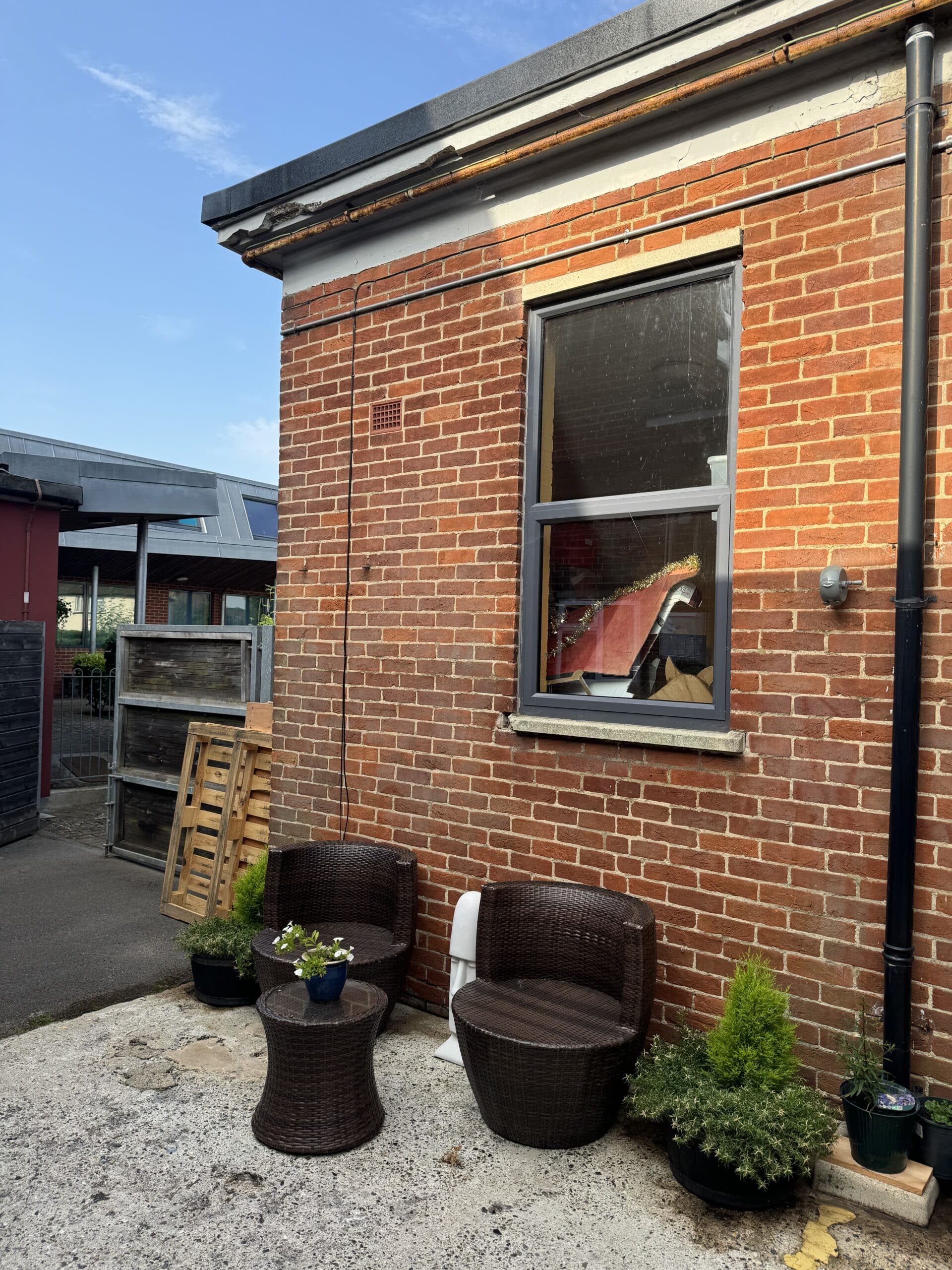
L’écaillage du béton : la menace silencieuse pour l’intégrité et la sécurité des structures
L’écaillage du béton est un problème omniprésent qui touche les structures du monde entier, souvent caché sous la surface jusqu’à ce qu’il devienne un problème visible et dangereux. Ce phénomène, dans lequel le béton se fissure et s’écaille par rapport au substrat sous-jacent, présente des risques importants pour l’intégrité et la sécurité des bâtiments, des ponts et des autres structures en béton.
La crise de la RAAC au Royaume-Uni met en évidence les dangers de l’écaillage du béton
Un rappel brutal de cette menace a récemment fait la une des journaux britanniques. En Angleterre, le ministère de l’éducation (DfE) a demandé à 104 écoles et collèges de fermer partiellement ou totalement les bâtiments à risque, quelques jours seulement avant le début de la nouvelle année scolaire. Le coupable ? Le béton cellulaire autoclavé renforcé (RAAC), un matériau léger utilisé dans la construction entre les années 1950 et 1990, dont on sait aujourd’hui qu’il est susceptible de s’effondrer soudainement. Cette crise a entraîné des perturbations généralisées, les écoles s’efforçant de trouver des solutions de remplacement et d’assurer la sécurité des élèves.
Sarah Skinner, directrice générale du Penrose Learning Trust, qui supervise les trois écoles touchées, a qualifié la situation d'”incroyablement difficile”. Avec des dizaines de salles de classe, de gymnases et même de cuisines hors d’usage, les écoles ont recours à des structures temporaires et à des chapiteaux pour poursuivre leurs activités. Cet exemple concret souligne l’importance cruciale de comprendre et de traiter l’écaillage du béton et les problèmes structurels connexes.
Sauvegarde des structures : Maîtriser la prévention de l’écaillage du béton
Dans ce guide complet, nous allons explorer les causes et les conséquences de l’écaillage du béton, et pourquoi des inspections régulières et des réparations opportunes sont cruciales pour maintenir la longévité et la sécurité de notre environnement bâti. Comprendre l’écaillage du béton est la première étape de la prévention de défaillances structurelles potentiellement catastrophiques et de la garantie de la fiabilité continue de notre infrastructure en béton.
Comprendre l’écaillage et la délamination
L’écaillage est un terme utilisé pour décrire les zones de béton qui se sont fissurées et se sont détachées du substrat. Il peut s’agir de petits éclats ou de grandes sections de béton qui s’effritent. Le décollement, quant à lui, désigne la séparation des couches de béton, souvent invisible à la surface. L’écaillage et le décollement peuvent affecter une grande variété de structures, notamment les bâtiments à ossature en béton, les parkings à étages, les ponts, les jetées, les réservoirs et les digues.
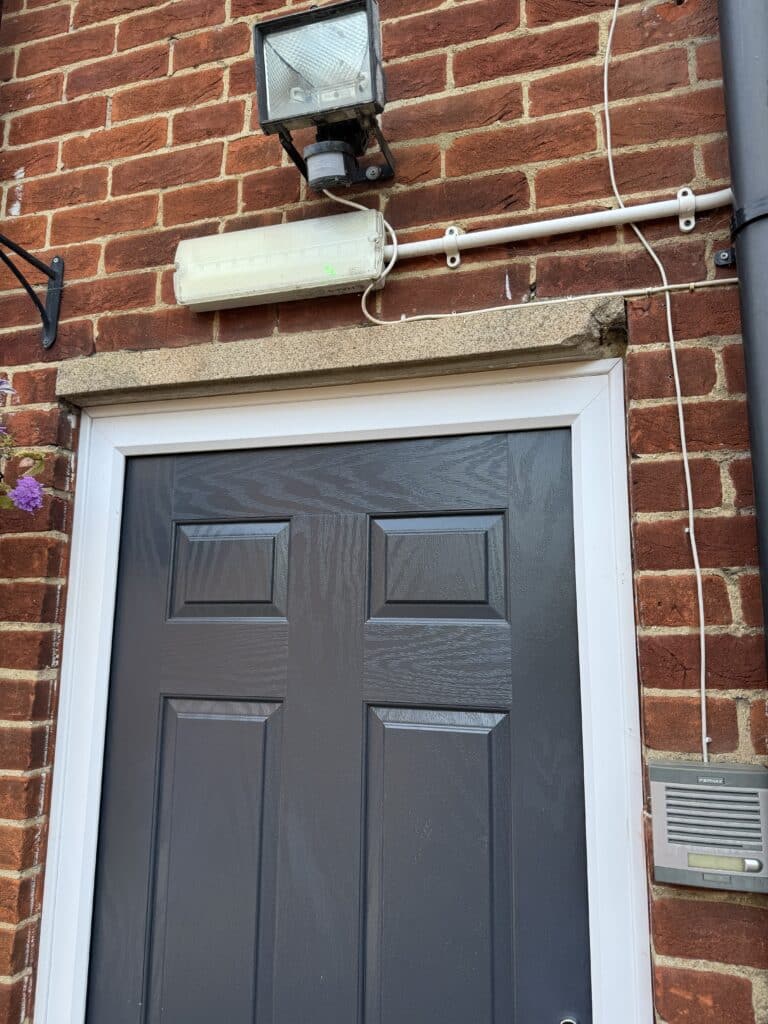
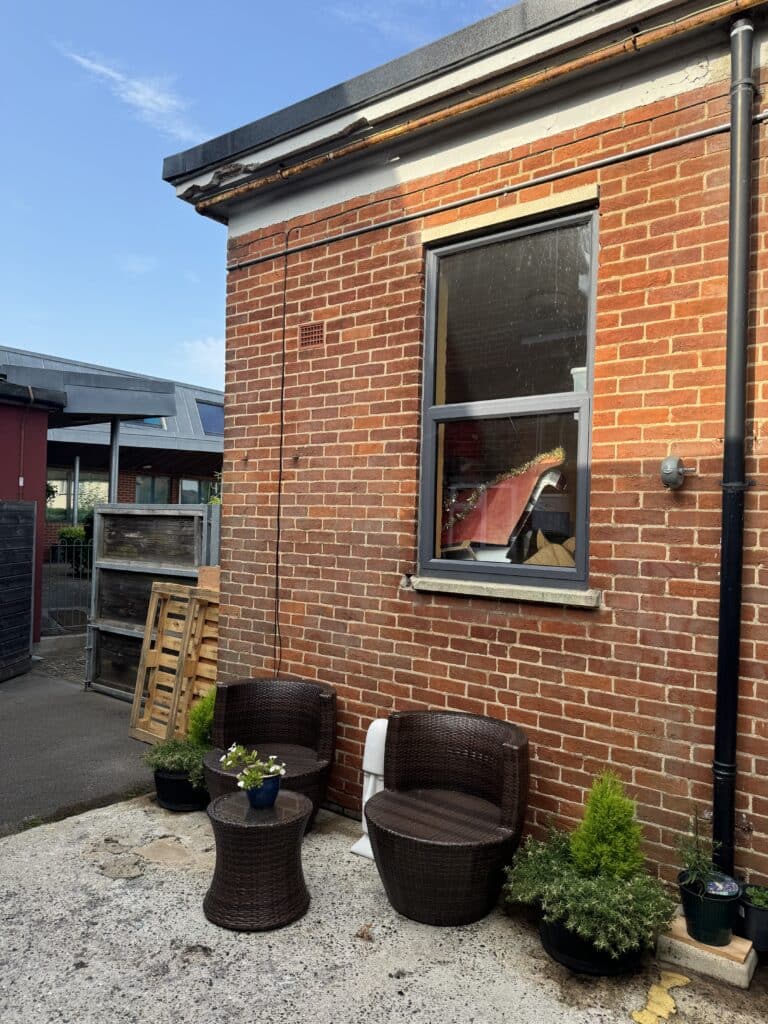
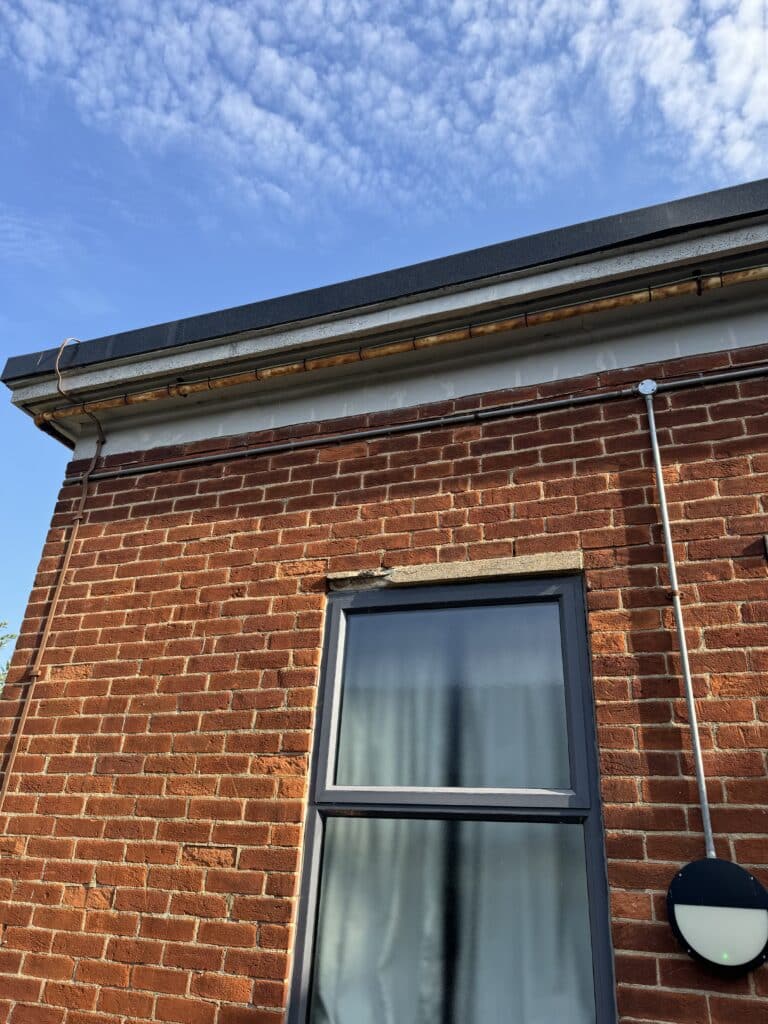
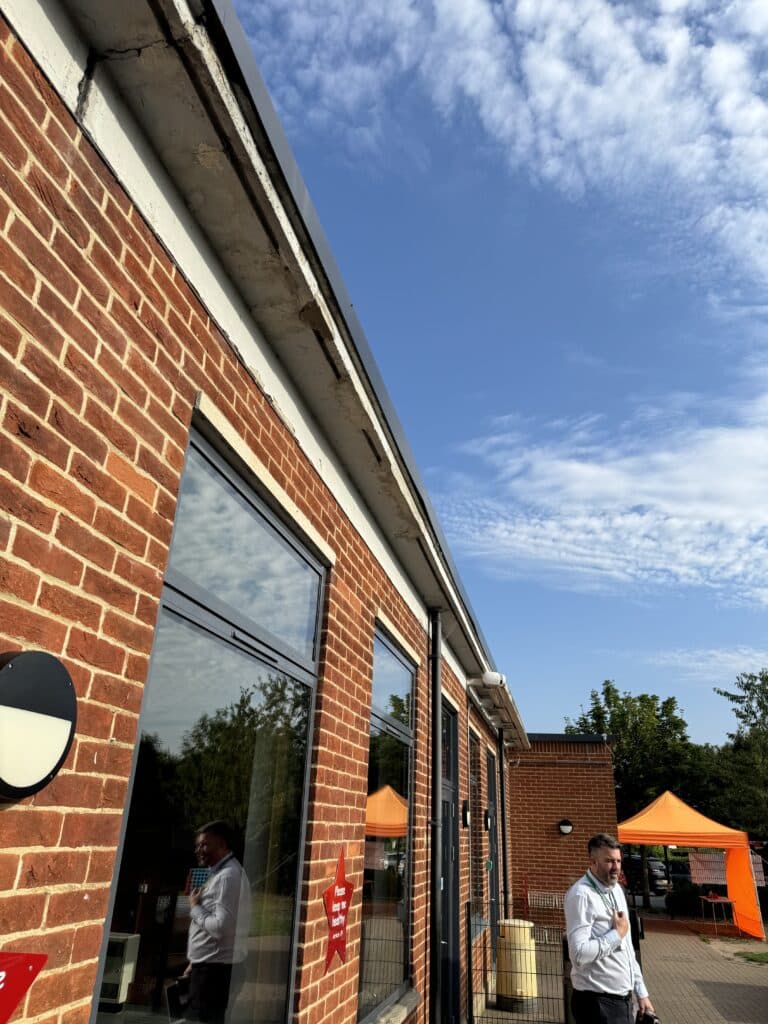
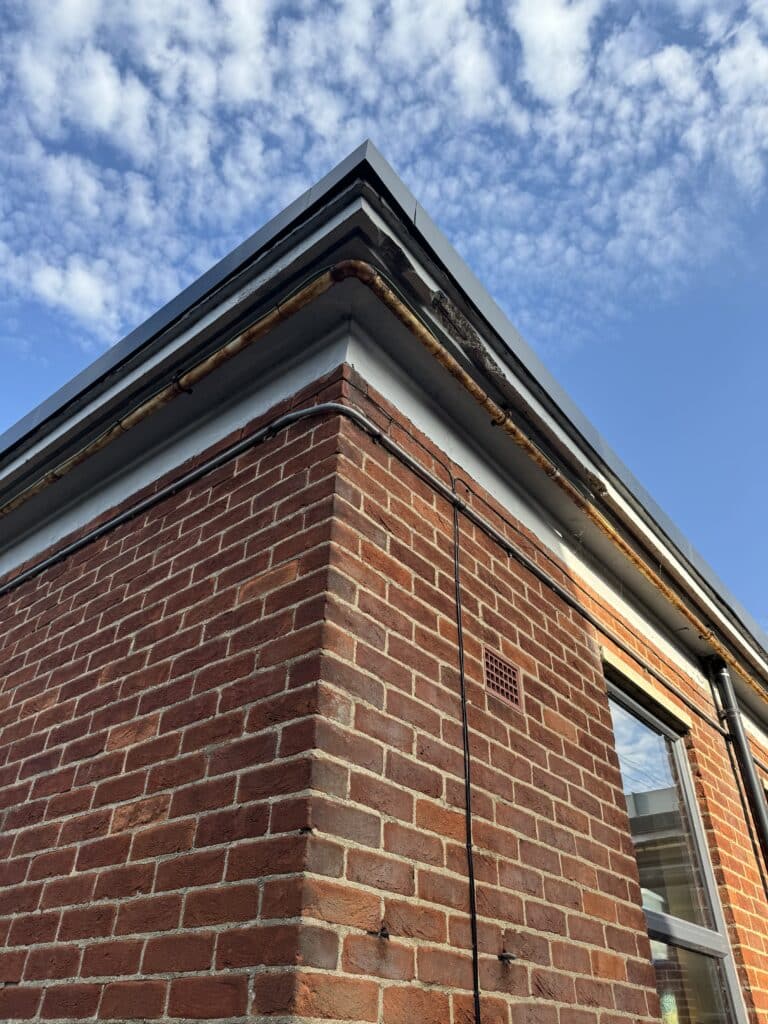
Les causes profondes de l’écaillage et de la délamination
Plusieurs facteurs peuvent contribuer à ces problèmes :
- Corrosion des armatures : La cause la plus fréquente d’écaillage est la corrosion des barres d’armature ou des sections d’acier encastrées. Lorsque l’acier se corrode, il peut se dilater jusqu’à dix fois son volume d’origine, exerçant ainsi une contrainte sur le béton environnant.
- Carbonatation : L’alcalinité naturellement élevée du béton protège l’acier encastré de la corrosion. Toutefois, cette protection peut être compromise par la pénétration de gaz atmosphériques acides, un processus connu sous le nom de carbonatation.
- Contamination par les sels : La présence de sels dans le béton, provenant généralement d’environnements marins ou de sels de déverglaçage, peut accélérer la corrosion et entraîner un écaillage.
- Facteurs environnementaux : Les cycles de gel-dégel, l’exposition au feu et les effets expansifs de la réaction alcaline de la silice peuvent également entraîner l’écaillage et la délamination.
- Mauvaises pratiques de construction : Une mauvaise cure, une couverture de béton inadéquate ou la présence de laitance (une faible couche de ciment et de particules fines à la surface) peuvent contribuer à la délamination.
Les conséquences de l’ignorance d’un effritement du béton
Le fait de ne pas aborder ces questions peut entraîner une série de problèmes :
- Risques pour la sécurité : Dans les espaces publics ou sur les lieux de travail, l’écaillage peut provoquer des chutes de débris ou des risques de trébuchement.
- Détérioration accélérée : S’ils ne sont pas contrôlés, les éclats et la délamination ont tendance à s’étendre et à s’accélérer, ce qui peut compromettre la stabilité de la structure.
- Déclin esthétique : L’effritement du béton donne à une structure un aspect négligé et peu attrayant.
- Impact financier : La valeur d’une structure qui se détériore diminue, tandis que les coûts d’entretien augmentent à mesure que la corrosion et l’écaillage se généralisent.
- Implications juridiques : La législation impose aux propriétaires le devoir de veiller à ce que les structures ne soient pas dangereuses pour les utilisateurs.
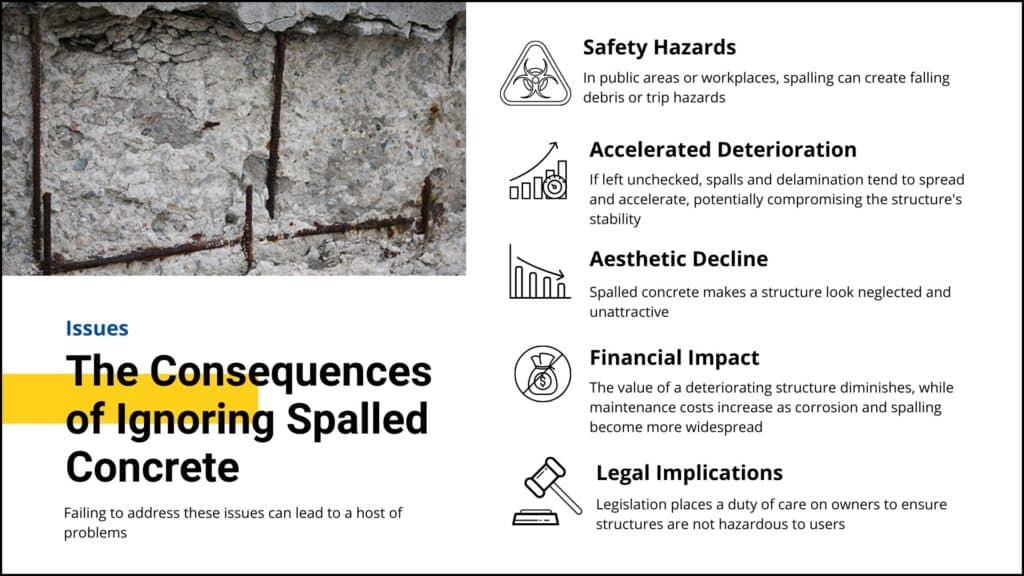
L’importance des enquêtes régulières
Compte tenu des conséquences potentielles de l’écaillage et de la délamination, des études régulières du béton sont cruciales pour l’intégrité et la sécurité de la structure.
Ces évaluations peuvent :
- Identifiez les premiers signes de détérioration : Détectez les problèmes avant qu’ils ne deviennent visibles ou qu’ils ne causent des dommages importants.
- Évaluez l’étendue des dommages : Déterminez l’étendue et la gravité des épaufrures et des zones délaminées existantes.
- Guidez les stratégies de réparation : Éclairer les décisions concernant les méthodes et les matériaux de réparation les plus appropriés.
Prévenez les réparations coûteuses : La détection et l’intervention précoces permettent d’économiser beaucoup d’argent à long terme.
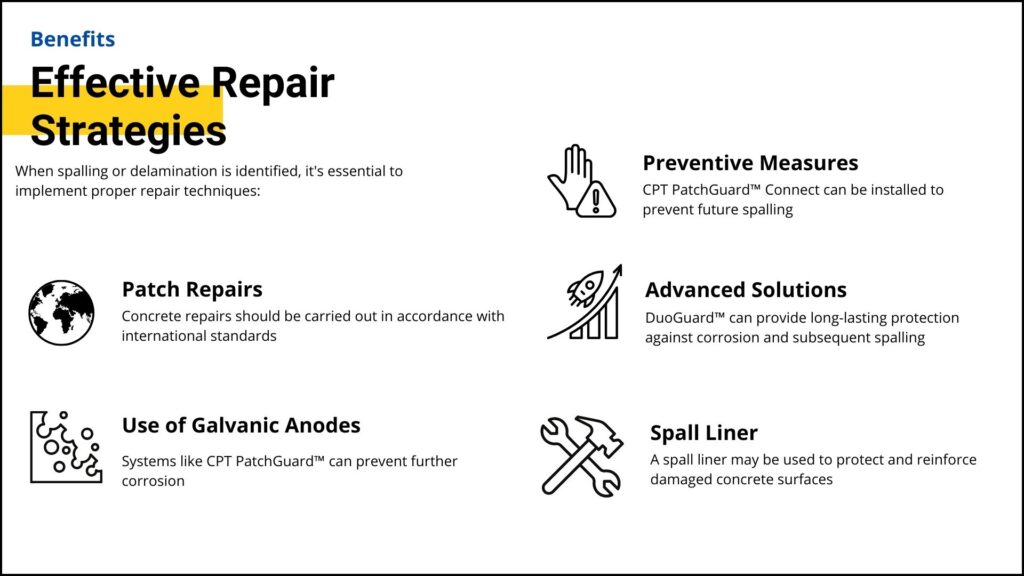
Stratégies de réparation efficaces
Lorsqu’un écaillage ou un décollement est identifié, il est essentiel de mettre en œuvre des techniques de réparation appropriées :
- Réparations par rapiéçage : Les réparations du béton doivent être effectuées conformément aux normes internationales telles que BS EN 1504 en Europe et au Royaume-Uni, ou ACI CODE-562-21 aux États-Unis.
- Utilisation d’anodes galvaniques : Des systèmes tels que CPT PatchGuard™ peuvent empêcher la poursuite de la corrosion autour des zones de réparation, prolongeant ainsi la durée de vie des réparations par rapiéçage.
- Mesures préventives : Dans les zones saines mais contaminées, des technologies telles que CPT PatchGuard™ Connect peuvent être installées pour prévenir de futurs épaufrures.
- Solutions avancées : Pour les environnements agressifs, les systèmes hybrides comme DuoGuard™ peuvent fournir une protection durable contre la corrosion et l’écaillage qui s’ensuit.
- Revêtement d’épaufrure : Dans certains cas, un revêtement d’épaufrure peut être utilisé pour protéger et renforcer les surfaces de béton endommagées.
Conclusion
L’écaillage du béton et la délamination sont des problèmes graves qui requièrent une attention vigilante et une gestion proactive. Les récentes fermetures d’écoles au Royaume-Uni nous rappellent brutalement les conséquences de la négligence de l’entretien structurel. Des inspections régulières et des réparations opportunes ne servent pas seulement à préserver les apparences ; elles sont essentielles pour garantir la sécurité, la longévité et la valeur des structures en béton. En comprenant les causes et les conséquences de l’écaillage et de la délamination, et en mettant en œuvre des stratégies de réparation et de prévention efficaces, nous pouvons nous assurer que nos structures en béton restent solides pour les générations à venir.
N’attendez pas que des signes visibles de dommages apparaissent. Contactez un spécialiste de la réparation du béton dès aujourd’hui pour planifier une étude complète de votre structure. N’oubliez pas qu’en matière d’écaillage et de délaminage du béton, la prévention est toujours préférable – et plus rentable – que la guérison.